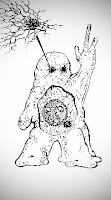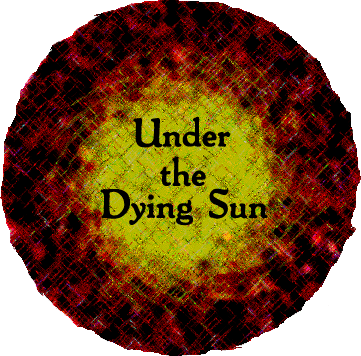Let me start by saying how much I love looking at M.A.R. Barker's 1975 Empire of the Petal Throne. This was a game that I became aware of due to a glowing, though probably incestuous, review in the Dragon magazine. It sounded so nifty. But, alas, I never actually saw one in my little corner of the gaming world and sort of forgot about it. I missed the other versions that came out over the years, until I snagged a used copy of Guardians of Order's Tekumel, which bored me so silly I turned around and resold it in record time (record time for me, anyway). Some time later, I stumbled upon a thread at rpg.net, wherein Mike Mornard talked about how they really played it back in the day (a thread which I'll be damned if I can find now). He was so inspiring that I went out and bought the pdf of the original game (back when one could buy legal pdf's before Wizards of the Coast decided to electronically wipe the memory of TSR from the face of the earth with the ridiculous assertion that they were preventing "piracy" following a policy that worked oh-so well for the music industry. But I digress).
One of the things I love about reading this book is that it is like falling into an alternate dimension of Ye Auld Game, wherein every thing is both familiar and weirdly different. If you haven't read it, do so (except that you can't legally buy the pdf anymore). But I don't want to review the game right now. Rather, I want to point out something that had never quite impressed itself upon me before:
Empire of the Petal Throne uses Uniform Level Progression. In 1975, just one year after D&D itself had been published! As far as I know, this is the first published version that uses Uniform Level Progression (I've never been clear on what Dave Arneson was doing, but his system wasn't published in any case). And it's a very simple progression to boot, with each level essentially doubling the requirements of previous: 2,000 xp; 4,000xp; 8,000 xp; and so on.
OK, there is a slight asterisk to all this. Up to Level 8 (or "VIII" as Barker has it) all three Classes share the same progression. But for reasons so inexplicable as to make me believe that it is a typo, a Wizard needs 10,000 xp less to reach 8th level and 40,000 less to reach 9th level. But even with that, I feel comfortable calling the system Uniform.
This all makes me feel even more comfortable using such a system in Under the Dying Sun. If it's good enough for Tekumel, it's good enough for me.
One of the things I love about reading this book is that it is like falling into an alternate dimension of Ye Auld Game, wherein every thing is both familiar and weirdly different. If you haven't read it, do so (except that you can't legally buy the pdf anymore). But I don't want to review the game right now. Rather, I want to point out something that had never quite impressed itself upon me before:
Empire of the Petal Throne uses Uniform Level Progression. In 1975, just one year after D&D itself had been published! As far as I know, this is the first published version that uses Uniform Level Progression (I've never been clear on what Dave Arneson was doing, but his system wasn't published in any case). And it's a very simple progression to boot, with each level essentially doubling the requirements of previous: 2,000 xp; 4,000xp; 8,000 xp; and so on.
OK, there is a slight asterisk to all this. Up to Level 8 (or "VIII" as Barker has it) all three Classes share the same progression. But for reasons so inexplicable as to make me believe that it is a typo, a Wizard needs 10,000 xp less to reach 8th level and 40,000 less to reach 9th level. But even with that, I feel comfortable calling the system Uniform.
This all makes me feel even more comfortable using such a system in Under the Dying Sun. If it's good enough for Tekumel, it's good enough for me.






















